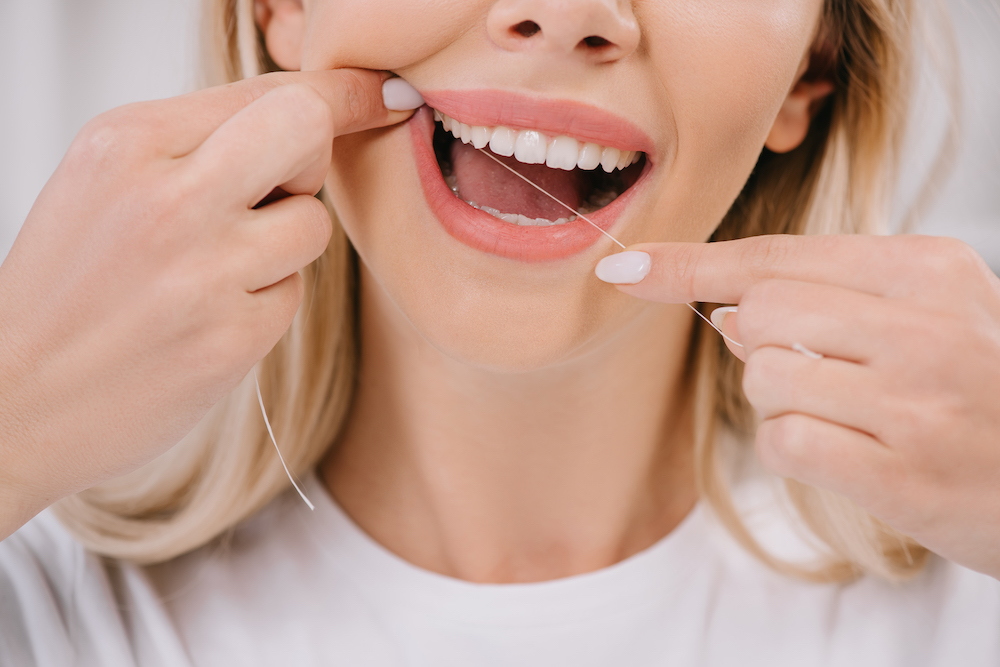Patients are often quizzed by their dentists about their oral hygiene routines, such as how frequently they floss. Most individuals say that cleaning their teeth is something they do regularly, but many people neglect flossing.
Tooth decay may be caused by foods that weaken the enamel and, in worst cases, you would need tooth extraction in Calgary. Your dental health may be at risk if food gets caught between your teeth and interacts with microorganisms. The enamel of the teeth may be eroded if food is stuck between them.
Choosing the Right Dental Floss
There are two popular forms of floss: nylon and Teflon. Both are equally effective. Dental tape with a flat, wide surface is ideal for those with large gaps between teeth or receding gums (the loss of gum tissue). A shred-resistant thin floss (typically made of Gore-Tex) may be helpful if your teeth are close together.
With braces or bridges, it is vital to have a finer touch to get between the teeth and under any metal or porcelain that may be attached to them. A floss threader, which resembles a giant plastic needle, is required for this activity. To get the floss between your teeth, you may use Super Floss, a product with a spongy part and traditional floss.
Proper Flossing Technique
Cut off about 18 inches of floss. Wind it around the middle fingers of both hands, leaving a gap of about three or four inches. You can now use different combinations of your thumbs and index fingers to get the floss between your teeth in all parts of your mouth.
TIP: A typical flossing error is to tighten the lips and cheeks, which makes it difficult to insert the floss into the mouth. Take a deep breath and let your muscles relax around your mouth and cheeks.
Using a gentle motion, insert the floss between your teeth.
TIP: Keep the floss from snapping into your gums no matter how little the space is. When carefully moving the floss between the teeth, make a sawing motion from side to side.
To avoid injuring the delicate triangle of gum tissue between your teeth, you must floss both sides of each gap. Fluoride is a mineral that may be found in toothpaste and other oral hygiene products that can help keep your teeth clean and healthy. Let the floss curl around the side of the tooth, producing the letter “C” with your fingertips away from the gum triangle.
TIP: You want your fingertips to be as near the tooth’s front and back as possible, moving up and down in unison until you hear a squeaky-clean sound. This is made simpler using wax-free floss. The less floss you have between your fingers, the more flexibility you have when flossing.
After that, slide your fingertips over the gap between the teeth to the opposite side. Repeat the process by applying pressure to your fingers in the other direction.
• Open your mouth wide and begin flossing. It’s a positive sign if it’s ragged or brownish: you’ve successfully removed plaque! Remove some fresh floss from the “dispenser” finger, pick up the old floss on the other finger, and then repeat.
• Make a new set of teeth by repeating the procedure. Don’t ignore the backsides of the final teeth while cleaning the whole mouth.
Protect your gums
When you neglect to floss, plaque and bacteria can easily build up. If they are not removed properly, the bacteria will eventually begin to irritate the gum tissue, which will worsen as the bacteria increases. When left untreated, this can eventually cause Gingivitis – a periodontal disease that causes red and puffy gums to bleed easily.
Teeth stays better
To make matters worse, the bacteria in your mouth will eat away at your tooth enamel, resulting in a cavity. Flossing will eliminate this plaque and prevent dangerous germs from growing on your teeth. Flossing regularly is an excellent technique to inspect your mouth for signs of decay and inflammation. It will also brighten your teeth by eliminating plaque and other food particles that you may not be able to see with the naked eye.
Protects from other diseases
An unhealthy mouth may have serious consequences for the rest of your health if it is not remedied. Gingivitis can enter the bloodstream and spread to other body regions, increasing the risk of heart disease, diabetes, and respiratory ailments. Flossing has several short-term advantages, but the long-term benefits outweigh the inconvenience.
Good for your overall health
Understandably, cleaning your teeth after every meal may be inconvenient, but flossing after a meal is simple and convenient. Flossing after a meal can assist you in avoiding overeating since it reduces your desire to nibble.
Dentists advise patients to floss once a day, ideally after brushing their teeth in the evenings, to remove any food particles or plaque that may have accumulated throughout the day. Book an appointment with Whistler Dental if you are worried about dental disease or have noticed any discomfort or changes in your teeth.
Conclusion
When brushing your teeth, floss your teeth as well. The Journal of Periodontology suggests flossing first, followed by brushing, to remove food particles between teeth. This also maintains the fluoride content on the tooth enamel.
Flossing, like brushing, should be done every day before sleep. Never be afraid to experiment with other types, sizes, and flavours of floss if you don’t like the flavour or form of one brand. Also, you can visit the dental clinic in Calgary and meet dentist to ensure your oral hygiene remains intact. When it comes to teeth whitening, your dentist may be able to provide you with a few free samples.
Because flossing is equally vital to brushing, your dentist will always inquire whether you do it. All it takes is a few more minutes of your time to do this. Your teeth and gums will appreciate you for the effort.



